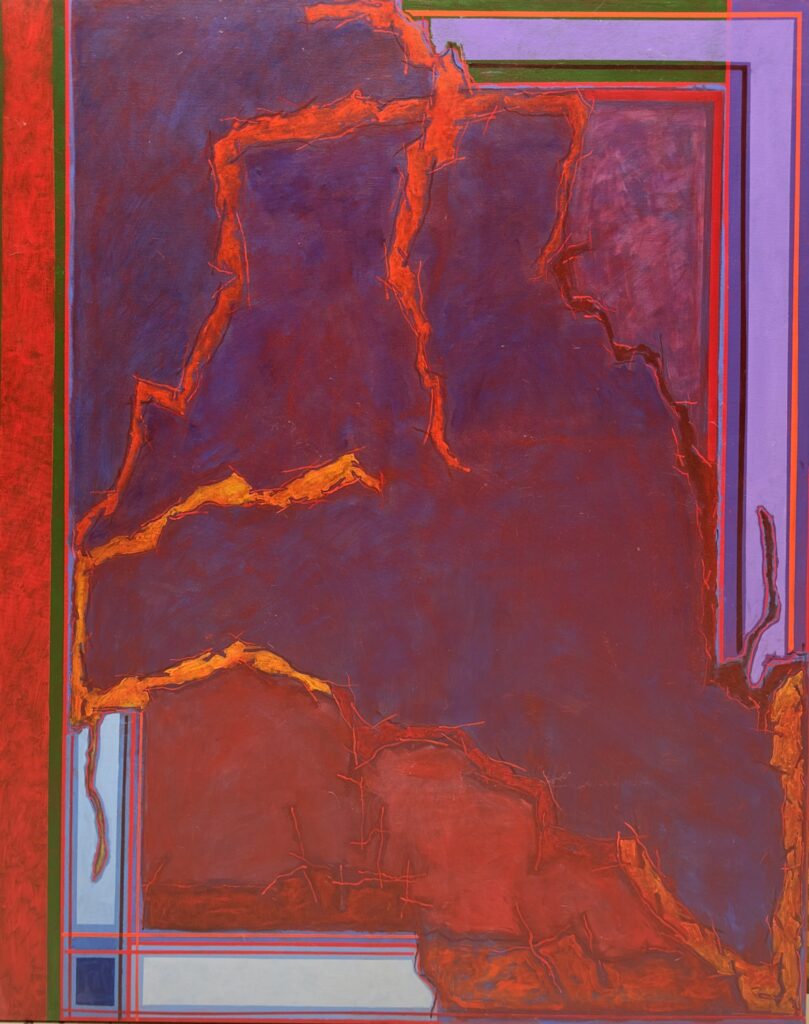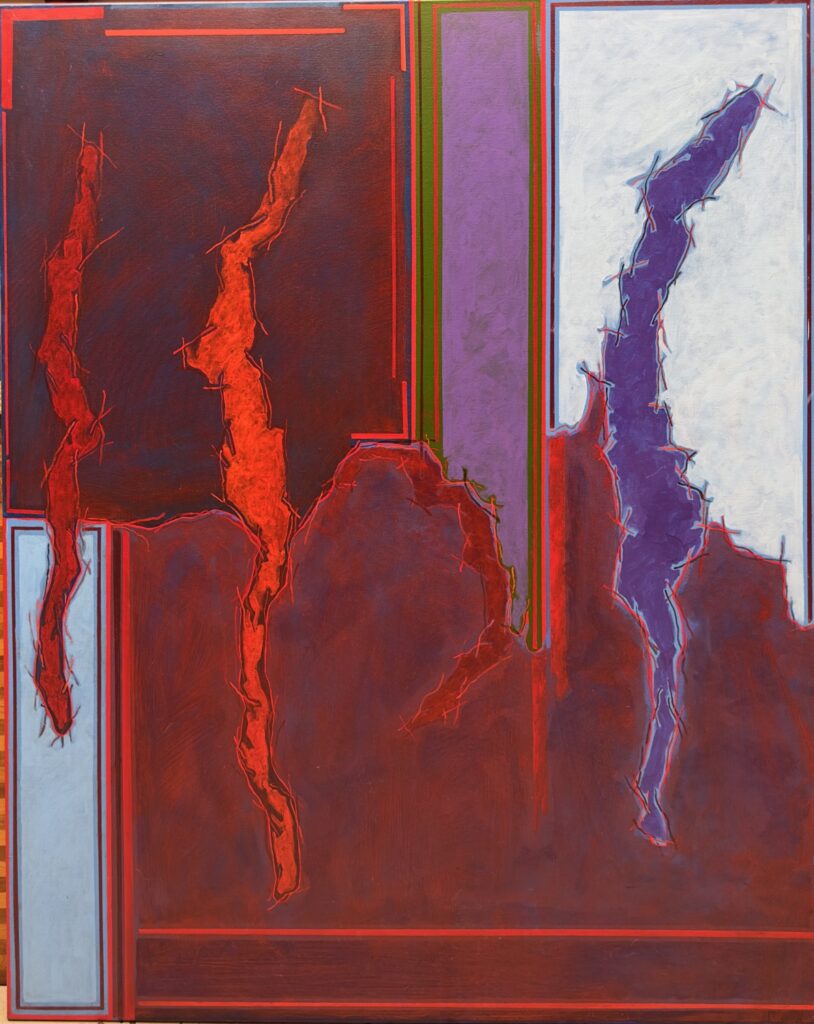In February of 1961, Robert Rosenblum made a strong case to prove that Subliminalism had not ended with the Romantic period of vast glowing landscapes. The Sublime, he posited in the ArtNews article, had been adapted and transformed by those he named the Four Masters of the Abstract Sublime: Clyfford Still, Barnett Newman, Jackson Pollack and Mark Rothko.
In comparing Rothko’s work to select pieces by Romantic artists, Rosenblum wrote that Rothko concealed a “remote presence that we can only intuit and never fully grasp.” He described the paintings as carrying the viewer “beyond reason to the Sublime.”
Rosenblum’s observation that the four Abstract Expressionists rejected Cubism to convey the times and their own emotional language through color and space, not only announced the power of their own work, but also how it would affect the fourteen paintings by Robert JM Morris, currently on exhibit at the Oratory Gallery at Grailville in Loveland.

Morris’s relationship with the Abstract Expressionists goes back to the late 1960s when a traveling exhibit went through Australia. Twenty years later, when the Tate Gallery opened its Liverpool location, select works from Mark Rothko’s famed Seagrams Paintings were on exhibit. Morris was completing six months of study and work in London. He was already recognized for his abstract work in Australia and the US.
The Tate exhibit was organized per Rothko’s original specifications when he first presented the work to the Tate in 1968. In Liverpool, the paintings were hung on gray walls in a simple space. The lighting was reduced to create an atmosphere that revealed the subtle depth and meditative qualities Rothko anticipated for the viewer experience. This attention to detail captured Morris’ attention. With two days left in his London stay, Morris made the choice to revisit the Rothko exhibit in Liverpool rather than see the pop-art of Gilbert and George.
As he left London, Morris confidently left a need for figurative references such as landscapes behind to focus all of his attention on the sublime, emotional, and spiritual nature of color as abstraction. Working from this newfound resolve, Morris was soon showing his work in Tokyo and Venice, while more than ten public collections on two continents acquired his paintings and sculptures. Soon after, he married and moved to the US making his home in Cincinnati.

In 1995 Morris was one of five artists in Main Traum — Approaching the Unconscious, in Over-the-Rhine. I first met Morris in 1996 at his studio in Madisonville. I visited his studio often, entranced by the way he worked. He quietly delivered one word answers to most of my questions about his paintings, sometimes talking about the meditation of it. He was planning this current exhibit, Stations of the Cross at that time. Art Critic Phyllis Woodcock, of the Courier Mail in Brisbane wrote of Morris’ 1985 sculptural exhibit Edge, “Morris’ work is really about the color theories which engage him and the manipulation of shapes in space and expanding and contracting distance. Despite the richness of his three-dimensional landscapes, Morris has the modesty to feel that his involvement with color will need a lifetime to achieve a final solution.” And Morris has given it that.

While he studied at the Moriarty School in Brisbane and took some classes at the Queensland College of Art, Morris is still a modest outsider, but he carries nonetheless, the same flame that ignited the Colorfield and Abstract Expressionists even now, thirty-five years later. He and his work have changed dramatically since the 1969. Aboriginal symbols are not present, nor are the splashes of paint Morris once used to hurl across the studio. “It’s spiritual.” he might whisper if you ask.
All of the paintings are numbered relative to the traditional titles of the stations, based on paintings and bas relief installed in Catholic churches. Fortunately, the story and raw emotion they convey is not a religious property. We all suffer and sacrifice in some ways during our lifetimes, and Morris makes it possible for viewers who are aware, to step into his paintings, and be strangely comforted by the intersections and movement of colorfield planes, with smooth and jagged lines.
When you walk into the gallery at the Oratory, you are met with subdued lighting and quiet music. The paintings are equally sized at 40”x60” and evenly spaced on the walls, starting at the right as you enter. To stand before the paintings is to, at times, become drenched in sorrow, feel a very personal resignation, absorb surrender, and ultimately know peace.

The hush in the small gallery is audible, even as viewers whisper and share what they see and feel. You are at once aware what it felt like to see a Rothko, Still, Newman, or Pollack while they were still making their mark: a vision which Morris picked up and made his own, for a lifetime.
Simply put, Stations of the Cross offers a rare and vanishing opportunity to experience the Sublime in new abstract colorfield works and as Rosenblum put it, “submit to them in an act of faith, and let ourselves be absorbed into their radiant depths.”
Stations of the Cross is on exhibit through May 7 with a closing ceremony, May 7th, 2-5 pm at the Grail Oratory, across from the old Grailville Retreat Center, 931 O’Bannonville Road, 45140 in Loveland.